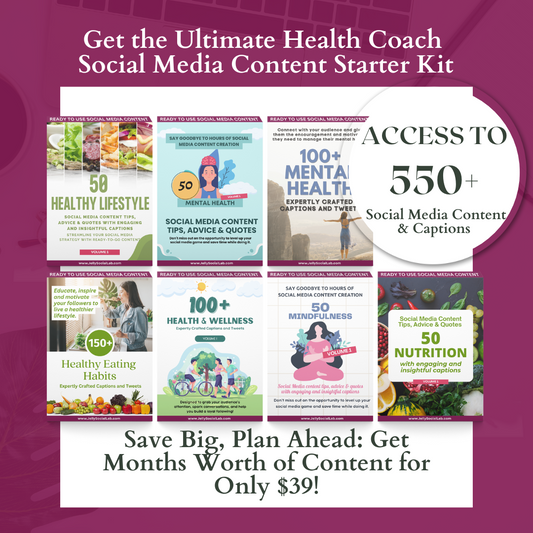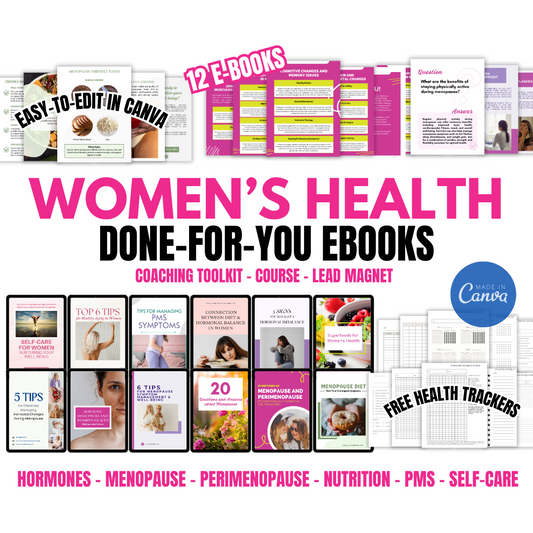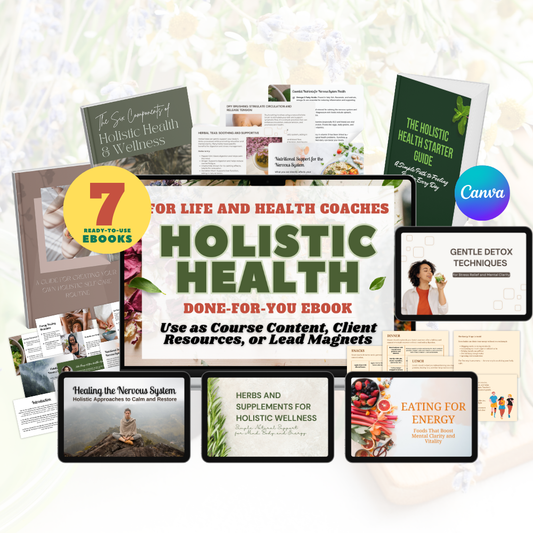
Wellness Content That Converts: How to Turn Education Into Engagement
Share
Creating content is one thing. Creating content that actually brings in clients is another.
As a wellness professional, you have valuable knowledge to share. But if your content isn't converting readers into clients, something's missing. The gap between education and engagement often comes down to a few key strategies that transform helpful information into compelling calls to action.
Here's how to create wellness content that educates your audience while naturally guiding them toward working with you.
Start With the Problem, Not the Solution
Most wellness professionals jump straight into sharing their expertise. They explain techniques, list benefits, and demonstrate their knowledge. But your ideal clients don't care about your methods until they know you understand their struggle.
Begin every piece of content by acknowledging the specific problem your audience faces. Get detailed. Instead of "struggling with stress," try "lying awake at 3 AM replaying every conversation from the day, unable to shut off your mind."
When people feel seen and understood, they keep reading. When they feel like you're talking directly to them, they trust you. That trust is what converts.
Make Your Content Scannable
Busy wellness seekers don't read every word. They scan for relevant information that speaks to their needs.

Use these formatting techniques to make your content easy to digest:
- Break up long paragraphs into 2-3 sentence chunks
- Use descriptive subheadings that tell readers what's coming
- Include bullet points for lists and key takeaways
- Bold important phrases or statistics
- Add white space to give eyes a rest
The easier your content is to scan, the more likely people will actually consume it. And consumption leads to connection, which leads to conversion.
Share Stories Over Statistics
Data has its place, but stories create emotional connections. Your audience wants to know how your approach actually makes a difference in people's lives.
Include real examples from your practice. Talk about the client who finally slept through the night after months of insomnia. Describe the transformation of someone who went from burnout to being balanced. Share your own wellness journey and what you learned along the way.
Stories make abstract concepts concrete. They help potential clients visualize their own transformation. They prove that change is possible, not just theoretical.
Always obtain permission before sharing client stories, and modify identifying details to protect client privacy.
Provide Immediate Value
Every piece of content should provide readers with something they can use immediately. Not eventually. Not after they hire you. Today.
This might seem counterintuitive. Why give away what you could charge for? Because when you provide real value upfront, you demonstrate your expertise and build trust. People who benefit from your free content become your best clients and your biggest advocates.
Give your audience:
- A simple technique they can try immediately
- A new perspective that reframes their challenge
- Specific steps to take before their next session
- A tool or resource that makes progress easier
The more value you provide, the more people want to work with you at a deeper level.
Create Lead Magnets That Actually Educate
One of the most effective ways to turn content into clients is through the creation of valuable lead magnets. These aren't generic checklists or basic tip sheets. They're genuinely educational resources that solve a specific problem for your ideal clients.
The key is offering lead magnets that match your audience's needs and your area of expertise. Whether you specialize in women's health, sleep optimization, nutrition, stress management, or holistic wellness, your lead magnet should provide real, actionable value.
Effective lead magnets include:
- In-depth guides on specific wellness topics
- Meal plans or nutrition protocols
- Sleep improvement strategies
- Hormone balance resources
- Stress reduction toolkits
- Self-care planning templates
When someone downloads your health and wellness lead magnet, they're raising their hand and saying they're interested in what you offer. They've permitted you to continue the conversation. That's your opportunity to nurture the relationship through email and guide them toward working with you.
The best part? You don't have to create these from scratch. Done-for-you lead magnets covering a wide range of wellness topics save you time while still providing genuine value to your audience.
Bridge Education to Action
This is where most wellness content falls short. You educate beautifully, but you don't connect that education to the next step.

Every piece of content requires a clear and natural call to action. Not aggressive sales language. Just a logical next step for someone who found your content helpful.
After explaining a breathing technique for anxiety, invite readers to download your free guide, which includes five additional techniques. After discussing nutrition myths, offer a free consultation to create a personalized plan. After sharing your approach to chronic pain, link to your booking page.
The transition should feel organic. If someone benefited from your content, of course, they'd want more support from you.
Address Objections Before They Arise
Your ideal clients have questions and concerns preventing them from taking action. Smart content addresses these objections naturally within the educational material.

Common objections in wellness include:
- "I don't have time for another commitment"
- "I've tried everything and nothing works"
- "This probably won't work for my specific situation"
- "I can't afford wellness services right now"
Weave responses to these concerns throughout your content. Show how your approach fits into busy schedules. Explain what makes your method different from what they've tried before. Include diverse examples that demonstrate versatility.
When you acknowledge and address hesitations, you remove barriers to conversion.
Use the Right Content Format for Your Message
Not every idea works in every format. Match your message to the medium that serves it best.
Blog posts work well for in-depth explanations, step-by-step guides, and comprehensive resources. Social media posts excel at quick tips, thought-provoking questions, and community building. Video shines for demonstrations, personal connection, and visual learning. Email nurtures relationships and guides people through longer journeys.

Consider creating the same core content in multiple formats to reach different learning preferences and platforms. Your blog post can be transformed into a video, which can then be repurposed into a series of social media posts, ultimately becoming an email sequence.
Optimize for Search Without Sacrificing Readability
SEO matters, but not at the expense of natural, engaging writing. Search engines have gotten smarter. They reward content that truly serves readers.

Include relevant keywords naturally in your headings, first paragraph, and throughout the content. But write for humans first. If a keyword feels forced, leave it out. If your content is genuinely helpful and well-structured, it will likely rank higher.
Focus on answering real questions your ideal clients are asking. Use the language they use when searching for solutions. Create comprehensive content that fully addresses their needs.
Quality content that engages readers will consistently outperform keyword-stuffed content that fails to do so.
Include Strategic Internal Links
Your content shouldn't exist in isolation. Each piece should connect readers to other relevant resources on your website.

Link to related blog posts that dive deeper into specific topics. Connect educational content to your services pages when relevant. Guide people to your opt-in forms and booking pages naturally within the content.
These internal links serve two purposes. They help readers find more valuable information, keeping them engaged with your content longer. They also guide potential clients through a journey from awareness to consideration to decision.
End With a Clear Next Step
Never leave readers wondering what to do with the information you've shared. Your conclusion should reinforce the main takeaway and clearly outline the next steps to be taken.

This could be downloading a resource, booking a consultation, joining your email list, or implementing a specific technique. Whatever it is, make it clear, simple, and valuable.
The best content doesn't just inform. It inspires action. That action might not be hiring you immediately, but it moves people closer to becoming clients.
The Bottom Line
Converting content isn't about manipulation or aggressive sales tactics. It's about genuinely serving your audience while clearly communicating how you can help them further.
Focus on understanding your ideal clients deeply, providing real value generously, and making the path to working with you obvious and inviting. When you do this consistently, your content becomes your most effective marketing tool.
Your expertise deserves to reach the people who need it most. Strategic content makes that connection possible.
Ready to create wellness content that actually brings in clients? Visit wellnesscontentkit.com for done-for-you blog posts, social media content, and educational lead magnets covering women's health, sleep optimization, nutrition, stress management, and more. Save time while attracting your ideal clients with content that's already optimized to educate, engage, and convert.





